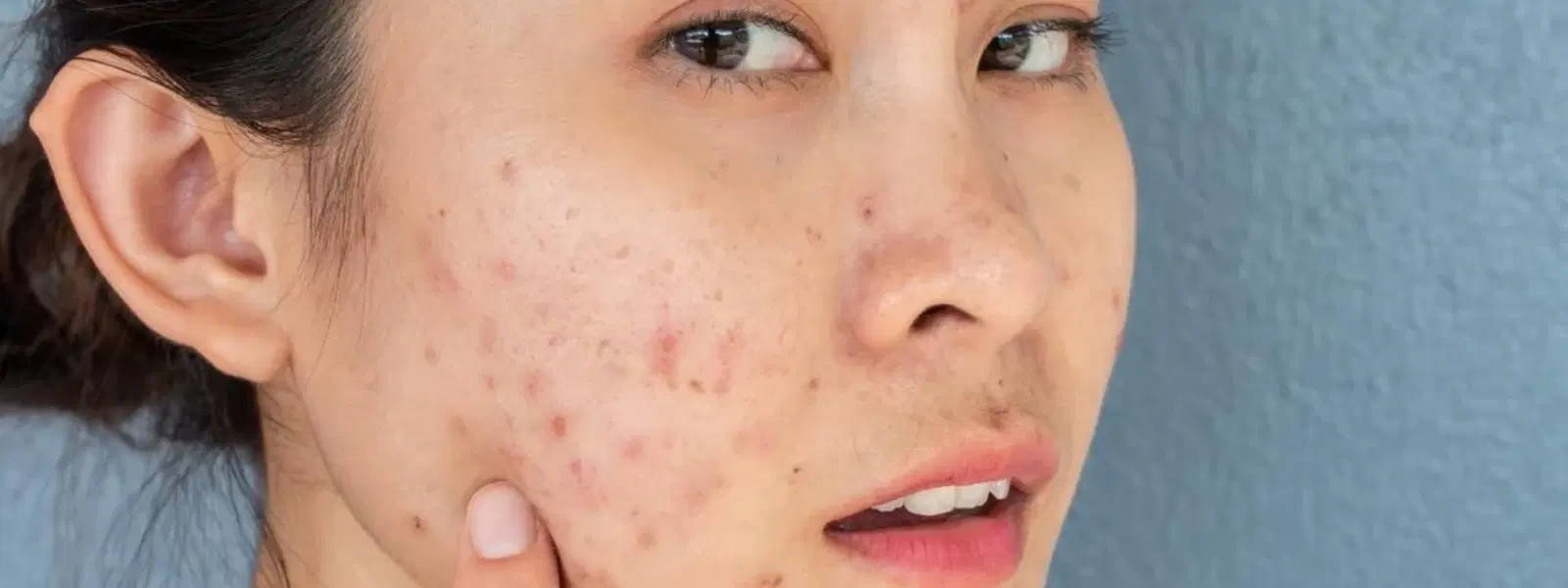
Beauty & Skincare
•03 min read
-9872eb55-9af0-4022-8644-bd8f05e8333e.png&w=3840&q=75)
Post-inflammatory erythema (PIE) can be a frustrating aftermath of acne or skin irritation, leaving behind persistent red marks that disrupt your skin tone. This guide walks you through actionable steps, remedies, and treatments to soothe post inflammatory erythema, reduce skin redness, and promote post-acne skin healing. As you read on, you will learn how to calm irritated skin, fade acne scars naturally, and achieve a more even complexion.
Post-inflammatory erythema refers to the red or pink discoloration left behind after inflammation or acne heals. It differs from hyperpigmentation, as PIE occurs from damaged blood vessels beneath the skin rather than excess melanin production. This condition can arise from picking or popping acne lesions, inflammatory skin conditions, or exposure to the sun on healing skin. Individuals with fair or sensitive skin tend to be more prone to experiencing these red marks on skin due to a heightened vascular response. Recognizing the difference between PIE and other skin discoloration treatment options is the first step towards effective management.
Tapping into nature’s pharmacy can be highly beneficial for addressing post-inflammatory erythema. Aloe vera, known for its anti-inflammatory properties, calms irritated skin while reducing redness. Green tea extract, rich in antioxidants, repairs damaged skin and helps in calming irritated skin. Additionally, licorice root acts as a natural brightener to fade red marks on skin and support an even skin tone, making it one of the hyperpigmentation remedies people turn to.
Incorporating simple yet effective skincare practices can expedite post-acne skin healing. Begin with gentle cleansing using a sulfate-free cleanser to avoid further irritation. Keep your skin hydrated by applying products enriched with ceramides or hyaluronic acid, as they bolster the skin barrier. Consistent use of broad-spectrum SPF is essential to prevent further damage and reduce skin redness, ensuring that your journey to fade acne scars naturally is both gentle and effective. Remember, slow and steady wins the race when it comes to blemish recovery tips.
-5ba1f1f6-995b-4617-a1ff-43890351cff7.png&w=3840&q=75)
For more persistent cases of post-inflammatory erythema, several topical treatments offer promise. Azelaic acid is a gentle yet effective option that reduces redness and enhances skin texture. Similarly, niacinamide helps in calming irritated skin while addressing skin tone unevenness over time. Retinoids, by encouraging skin cell turnover, are another viable approach for those looking to treat acne redness solutions and achieve a smoother complexion.
When at-home remedies are not enough, professional procedures may be considered. Laser therapy, such as vascular lasers, directly targets blood vessels to reduce redness and improve post-inflammation appearance. Microneedling encourages collagen production, which repairs skin damage and supports a comprehensive skin discoloration treatment plan. Additionally, chemical peels using mild acids like lactic or glycolic not only exfoliate the skin but also help fade PIE for enduring results.
Lifestyle choices play a critical role in achieving lasting results in post-acne skin healing. Avoiding the urge to pick at your skin is crucial, as it can aggravate inflammation and lead to additional red marks on skin. A balanced diet rich in antioxidants, including berries and leafy greens, can nourish your skin from within. Moreover, stress management practices such as yoga or meditation may help in reducing skin tone unevenness by keeping inflammation at bay. Being consistent with your skincare routine, including regular use of anti-inflammatory products, is essential for long term clear skin and offers effective acne redness solutions.
Prevention is as important as treatment when tackling PIE. Addressing acne early on helps minimize the potential for lasting red marks on skin, while adopting anti-inflammatory skincare ingredients like centella asiatica or chamomile works to keep the skin calm and resilient. Avoid over-exfoliation, which can strip the skin’s natural barrier, and instead focus on products that repair and soothe. Regular check-ins with a dermatologist can also provide personalized blemish recovery tips and tailor a treatment plan to your unique needs, ensuring your skin remains vibrant and balanced over time.
Pro Tip: "Consistency is Key to Fading PIE"
Post-inflammatory erythema doesn’t fade overnight. Stick to a gentle skincare routine that includes sun protection and anti-inflammatory ingredients. Over time, your skin will heal, and the red marks will gradually diminish.

Post-inflammatory erythema can be reduced with a combination of at-home remedies like aloe vera and niacinamide as well as professional treatments such as laser therapy or chemical peels.
The duration varies based on the severity of inflammation and the treatment applied. Typically, it can take several weeks to months for the redness to fade completely.
In most cases, PIE fades over time when supported by a consistent and tailored skincare regimen. However, severe cases may benefit from professional interventions.
The best treatment depends on individual skin needs. Mild cases can improve with topical treatments like azelaic acid, while persistent cases might require professional procedures, including laser therapy.
Post-inflammatory erythema may seem like a stubborn barrier to achieving a clear and even complexion, but with a mindful mix of gentle skincare, smart lifestyle adjustments, and targeted treatments, you can calm irritated skin and support post-acne skin healing effectively. Embracing consistent routines and protecting your skin barrier are key steps in your journey to reduce skin redness and experience genuine skin improvement. Explore the wide range of beauty and skincare solutions that support your self-expression and identity while keeping your skin healthy and vibrant.